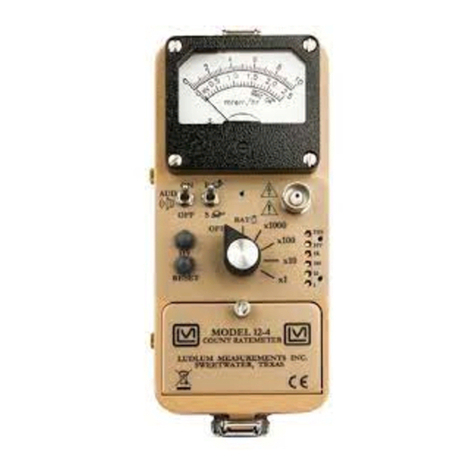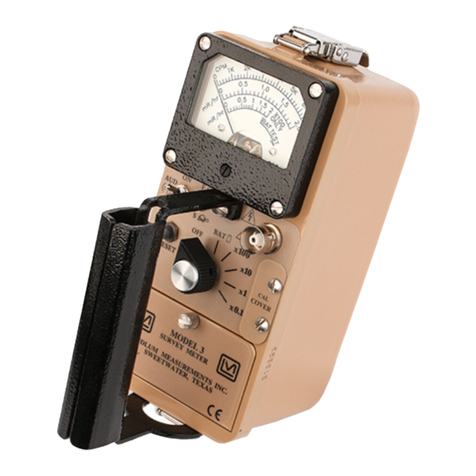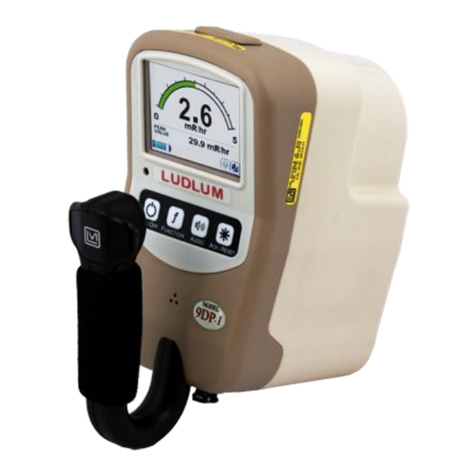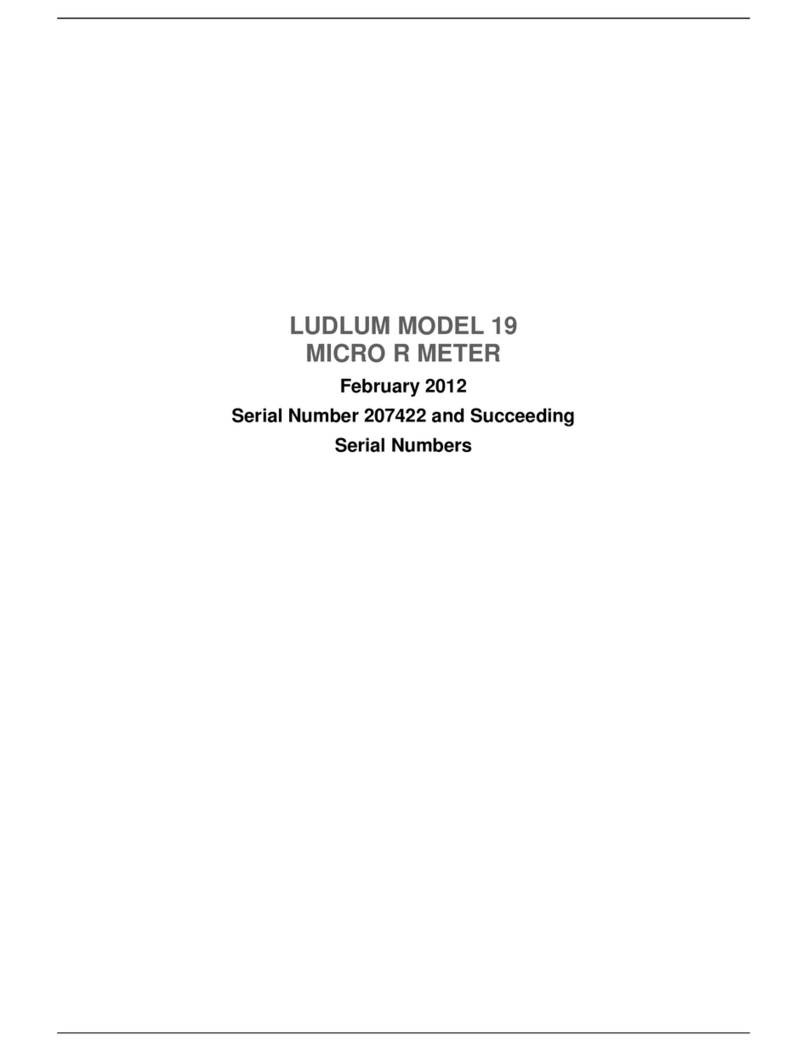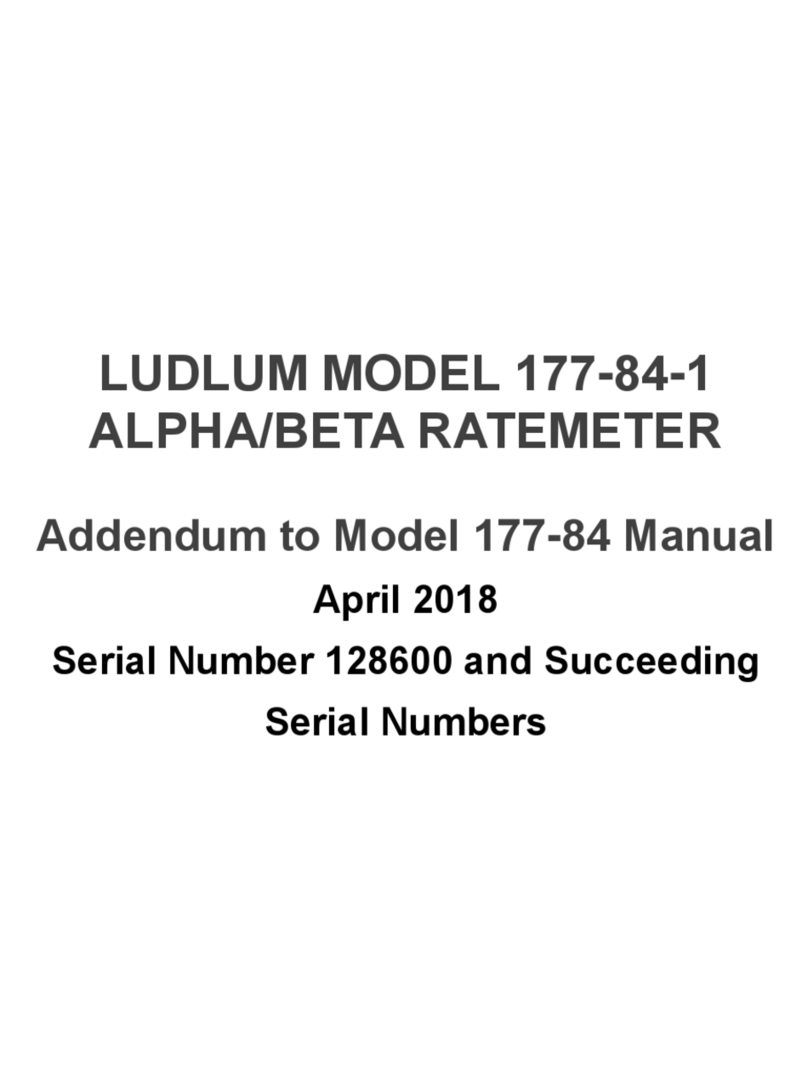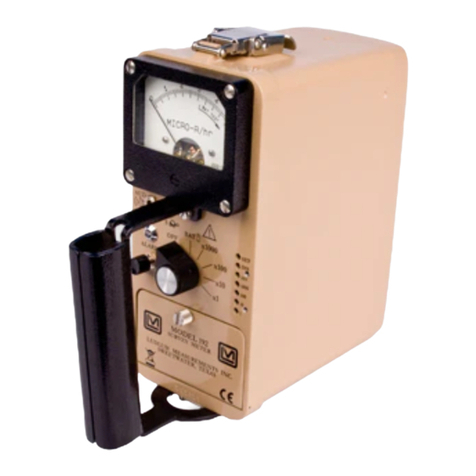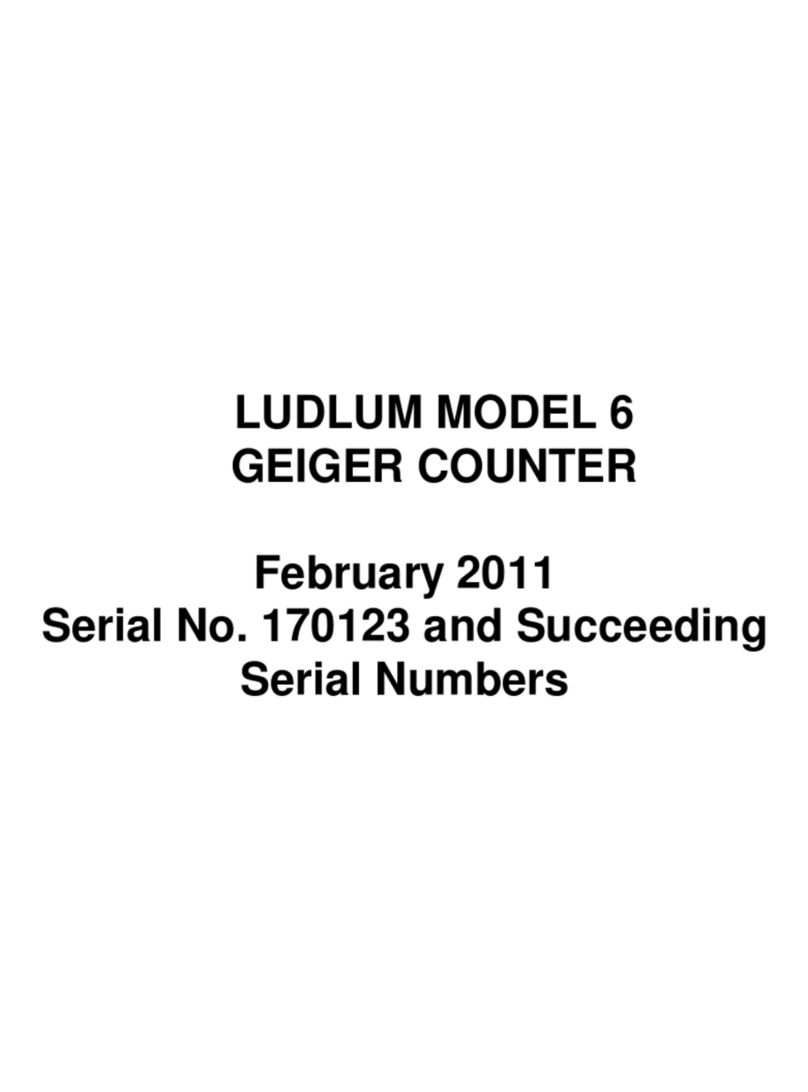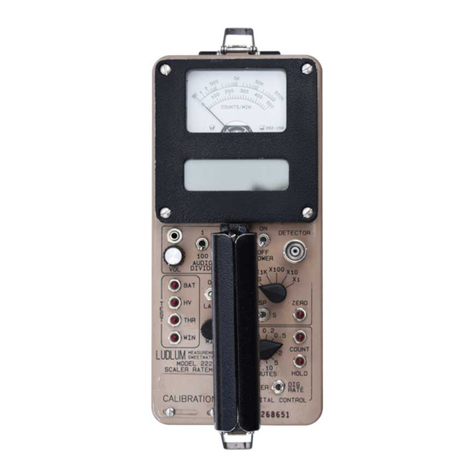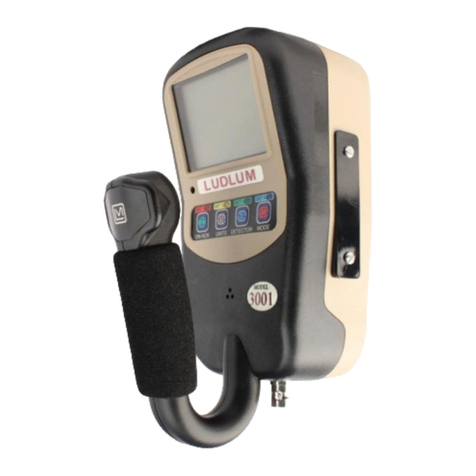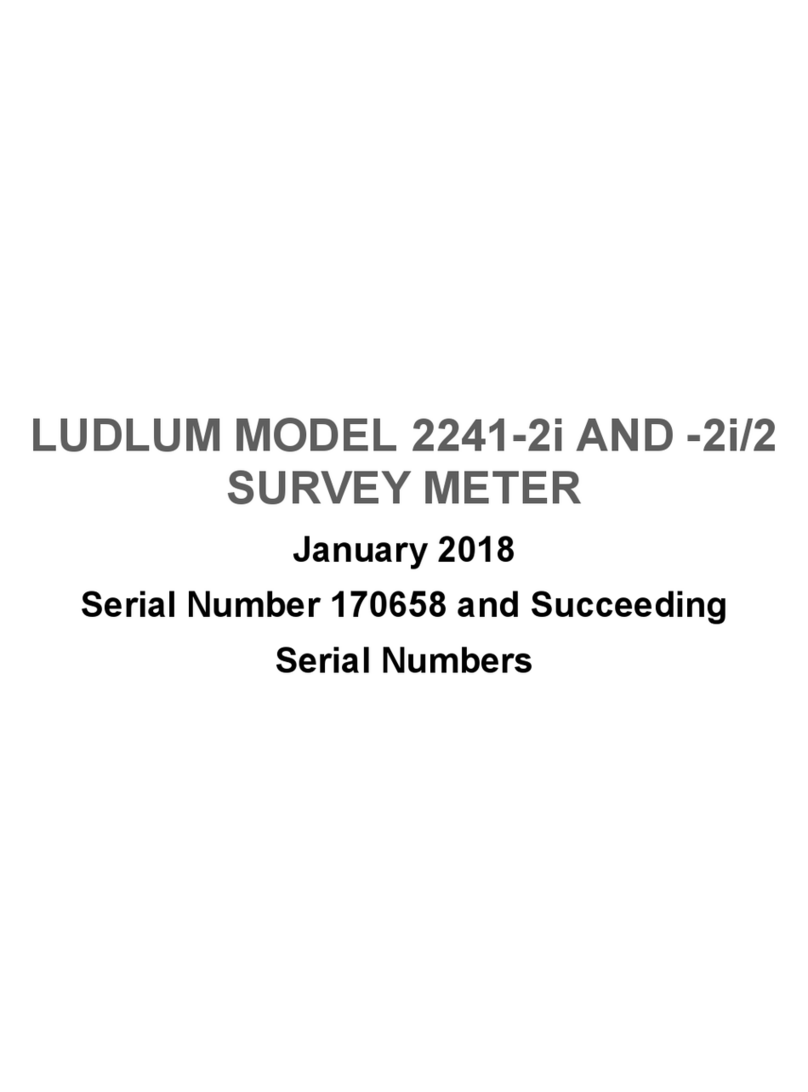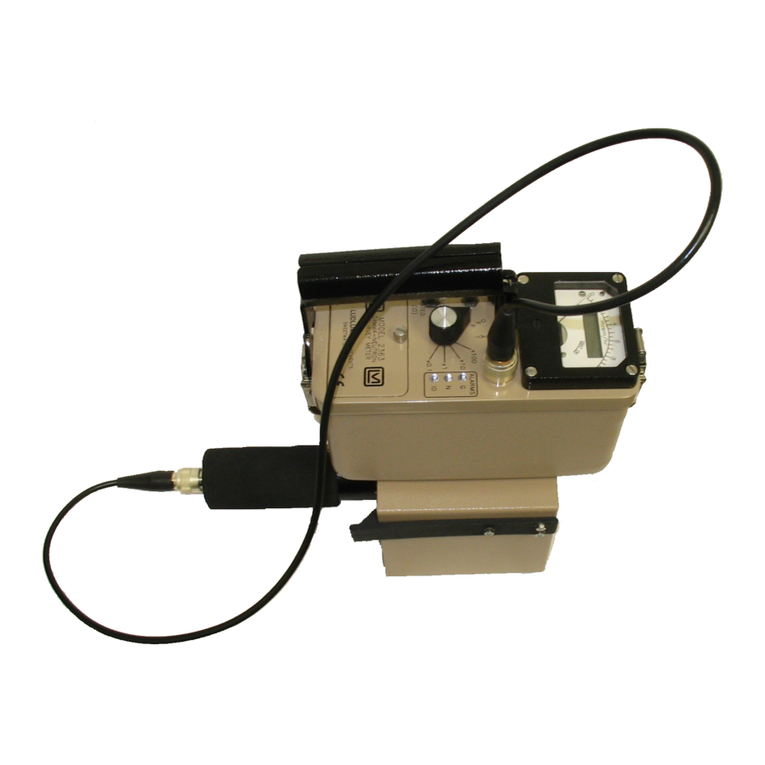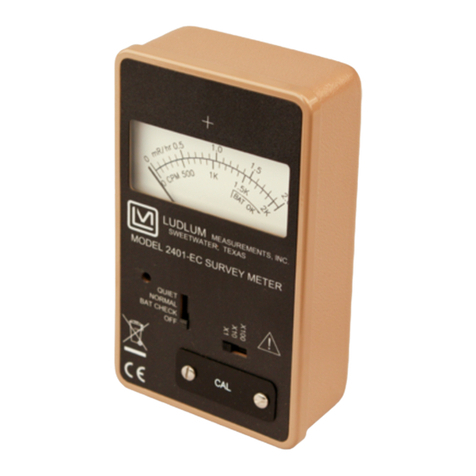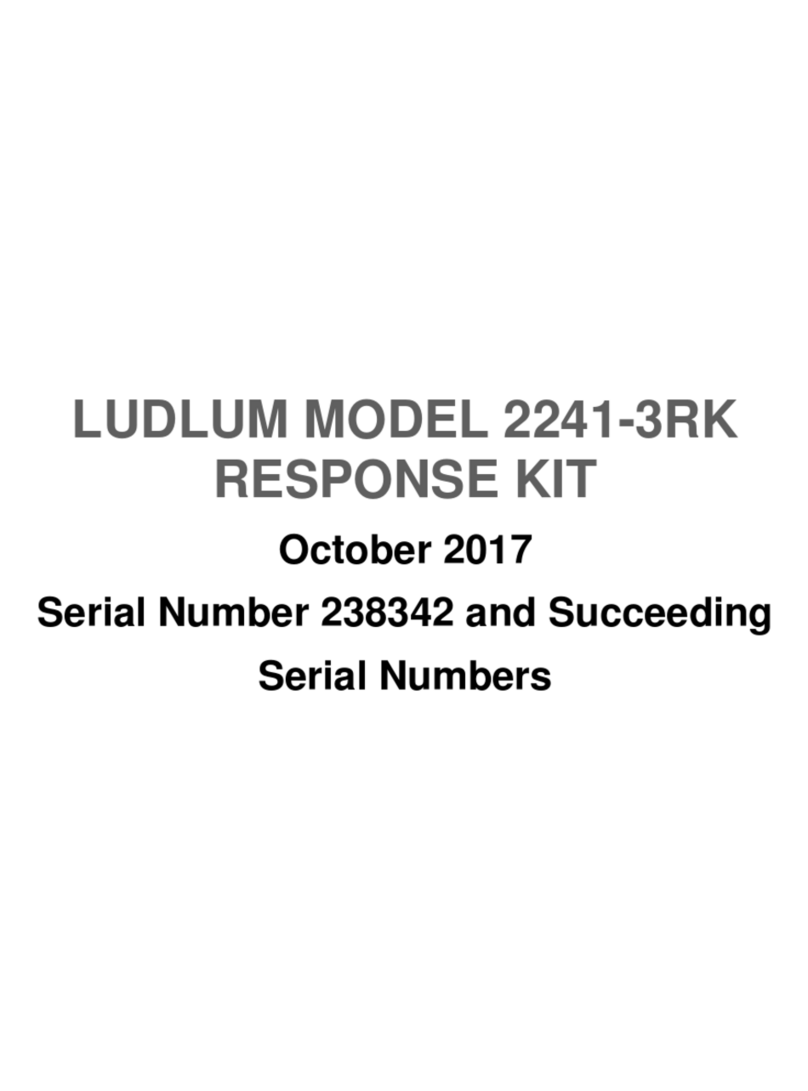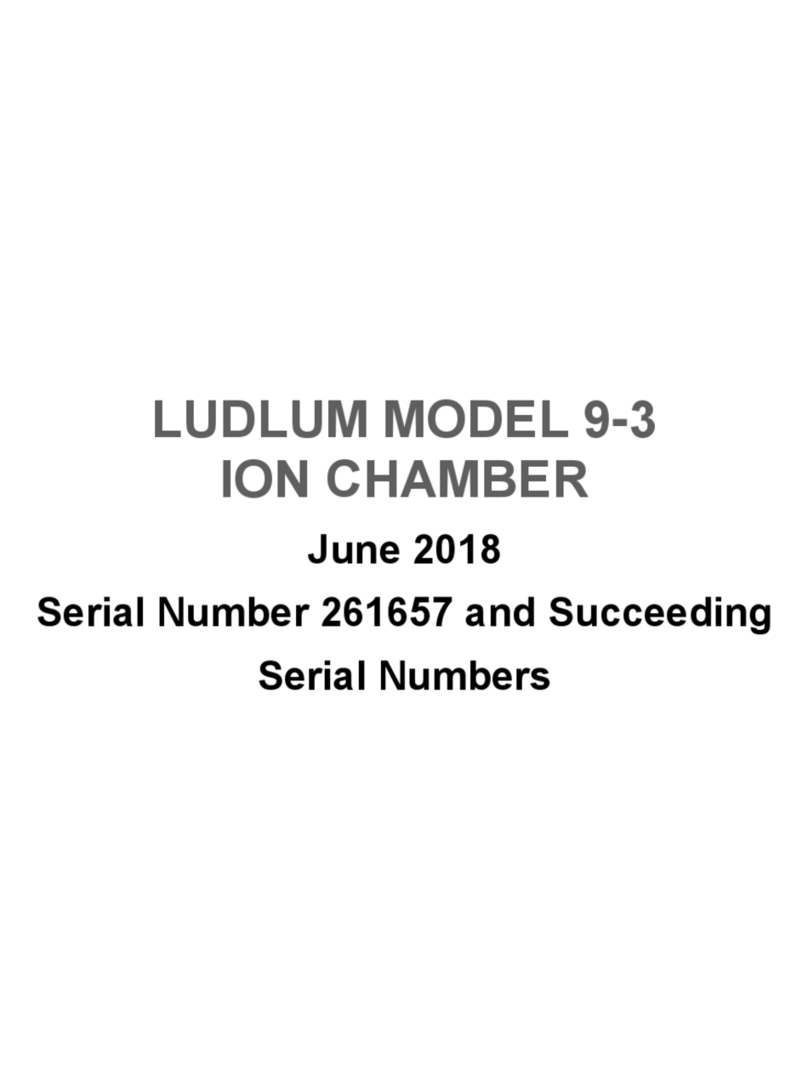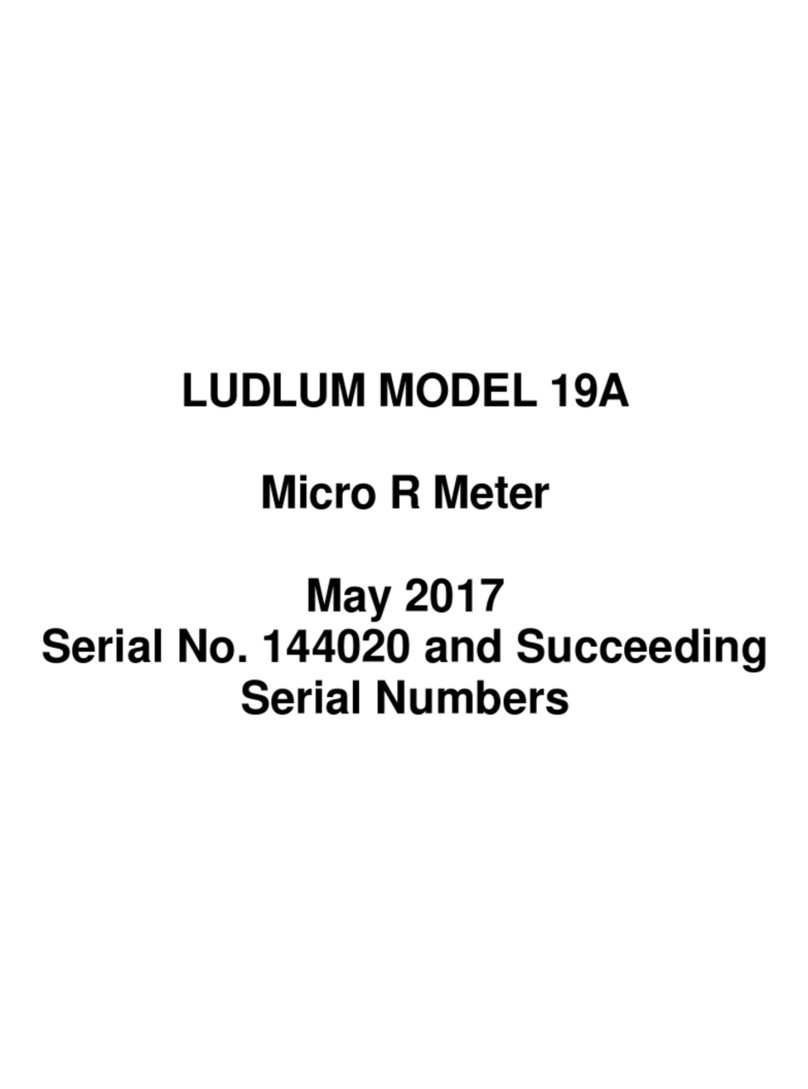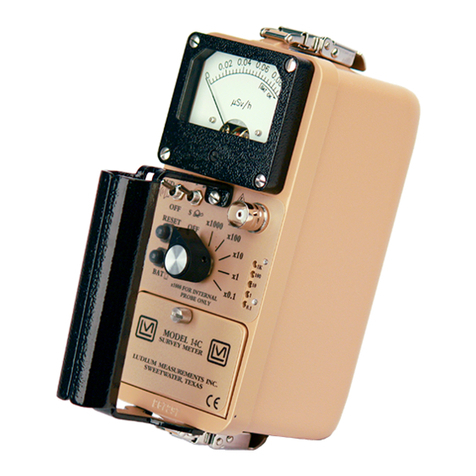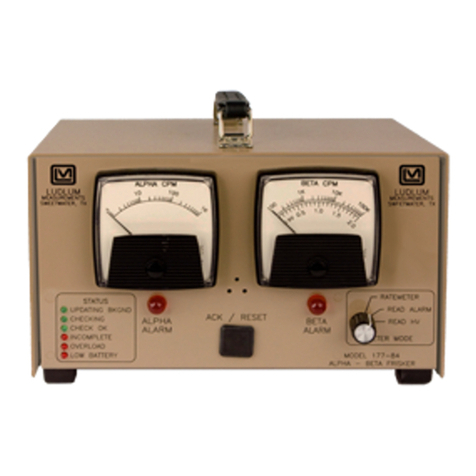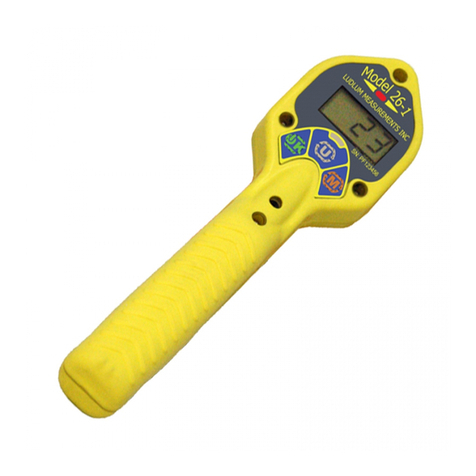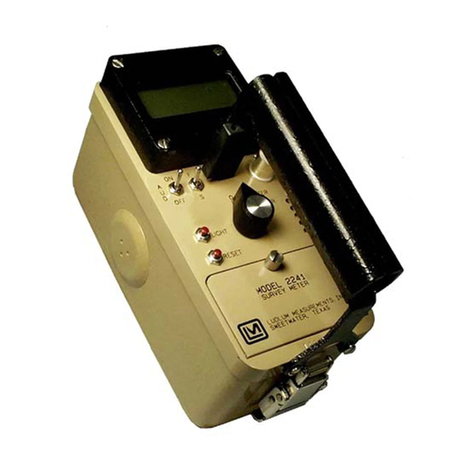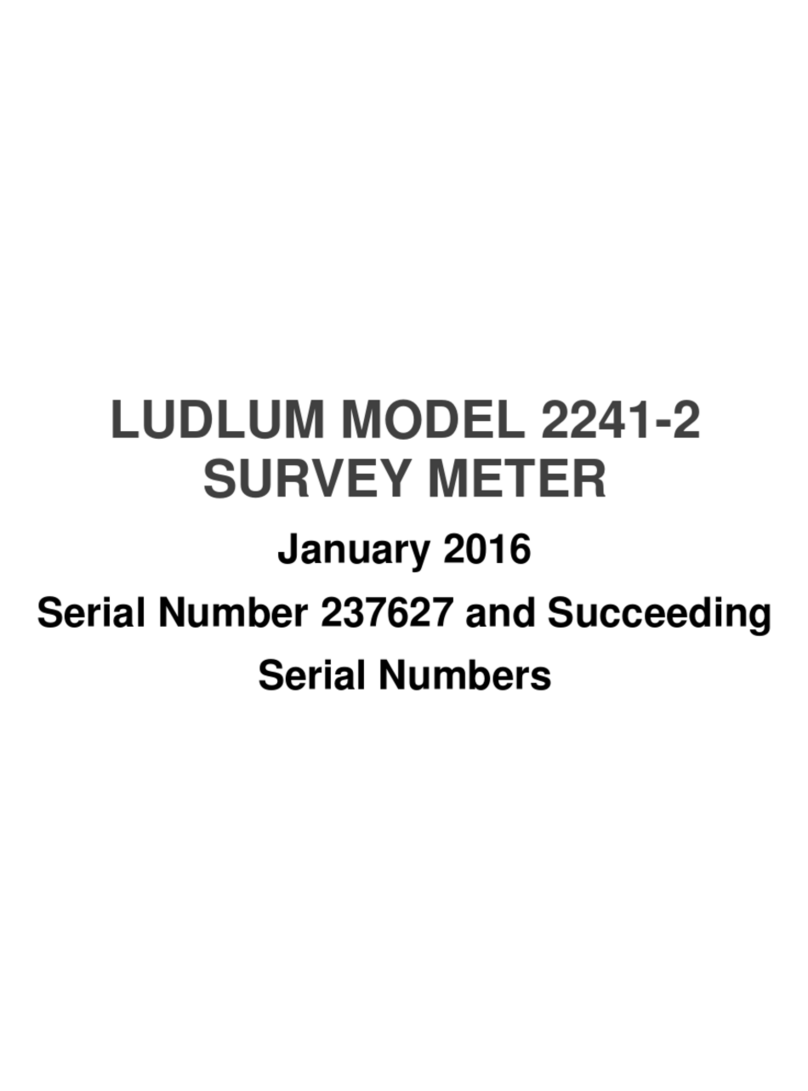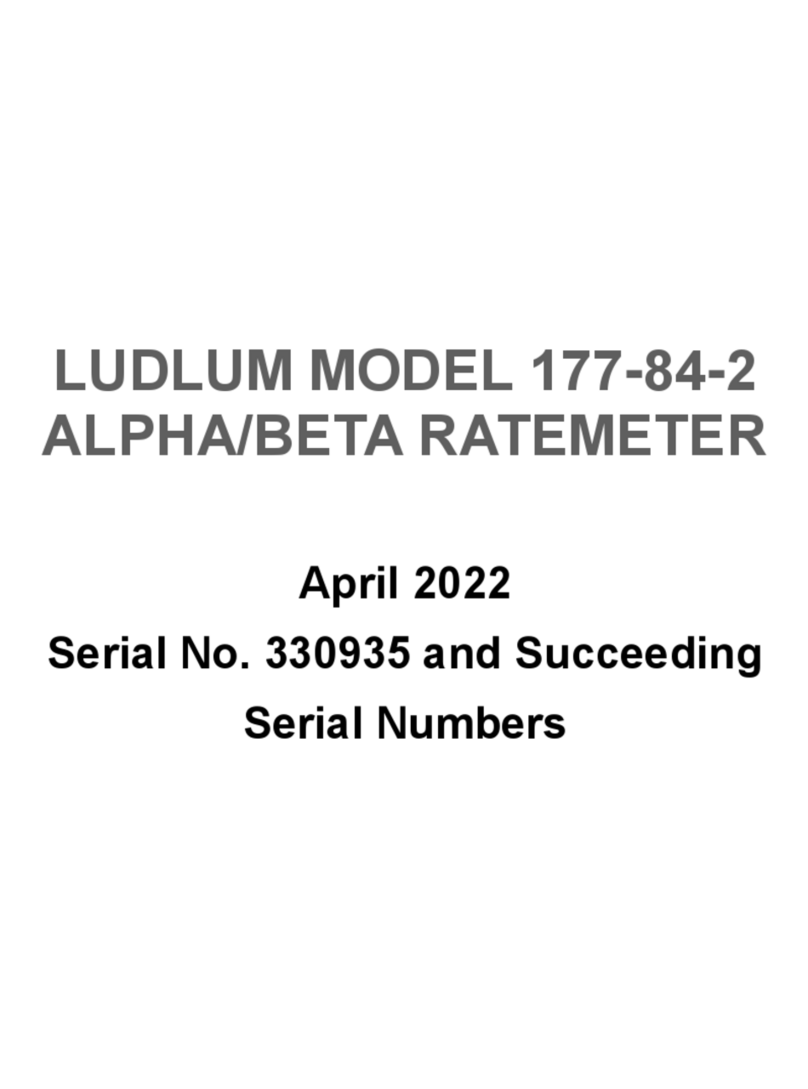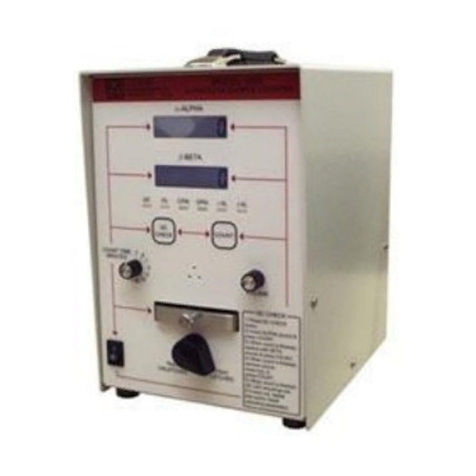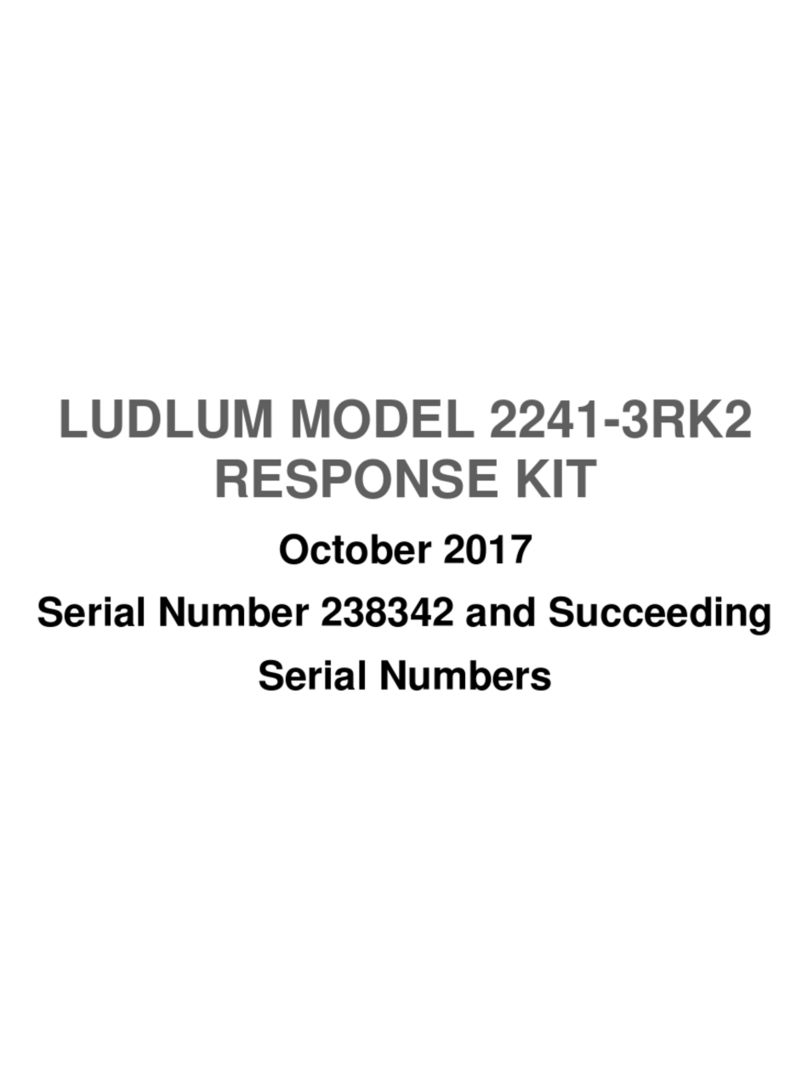M3-98
Survey
Meter
The Model 3-98
is
a portable survey instrument
with four linear ranges reading up to
500,OOO
CPM.
Theinstrumentfeaturesan internalpancaketube along
with the capability of utilizing an external probe by a
switch
on
the front panel labeled INT/EXT. Separate
high voltage adjustments for the internal and external
probes are provided. The high voltage power supply
is regulated and adjustable from 200 to loo0 volts.
Theunit body is made of cast aluminum, includingthe
meter housing. The can
is
0.090" aluminum. Other
operatingfeaturesof theinstrumentincludea unimorph
speaker mounted to the instrument can with an audio
ON-OFF capability, fast-slow meter response, meter
reset button, and a six-positionswitch for selecting
battery check or scalemultiplesof XO.
1,
X1, X10, and
X100. Each range multiplier has its own calibration
potentiometer.
Any G-M probe offered by the company will
operate
on
this
unit
as
well
as
many of the scintillator
type detectors. The externalhigh voltageis factory set
for 900 volts. For special requirements, it
may
be
adjustedfor operationwithany
G-M
or scintillatortube
between 200 and lo00 volts.
The
unit
is operated with two
"D"
cell flashlight
batteries for operation from 150°F to approximately
32°F. For temperature operation
to
O"F, either very
fresh alkaline or rechargeable NiCd batteries may
be
used.
Battery drain averages 17 milliamperes.
0
POWER: two standard
"D"
sizebatteries
0
RANGES: four linear range multiples of
XO.l, X1, X10, and X100; typically used in
combinationwith the 0-5k CPM meter dial,
0-500,OOO
CPM
is
achieved with the range multiplier.
0
l"UT
SENSITIVITY: 30 millivolts,
(f
10
mV)
0
AUDIO: built-in unimorph speaker with an
0
HIGH
VOLTAGE:externallyadjustablefrom
0
RESPONSE: Four or twenty-twoseconds for
0
LINEARJTY: plus or minus
5%
full scale
0
BATTERY
LIFE:
exceeds 600 hours with a
ON-OFF switch
200 to
lo00
volts
90%of final meter reading
fresh set of alkaline
"D"
cell batteries
BATTERY DEPENDANCE: Instrument
calibration change less than 3%within battery check
limits
on
meter
METER: lmA, 2 1/2-inchscale, with pivot-
and-jewel suspension
METER COMPENSATION: temperature
compensationis provided by thermistors
on
the Main
Board CONNECTOR: Series "C", 706 UIG; BNC
or MHV
may
also be provided
0
SIZE: 10.67cm (4.2")H X 8.9cm (3.5")W
X
21.6cm
(8.5")L,
exclusive of handle
WEIGHT: 1.36kg
(3
lbs.) less detector and
batteries
FINISH:
drawn-and-cast aluminum, with
computer-beigepolyurethaneenamel and silk-screened
nomenclature
3.
DESCRIPT.ION
OF
CONTROLS
AND
FUNCTIONS
0
Range Multiplier Selector Switch: A six-
position switch marked OFF, BAT, X100, X10, X1,
XO.
1.
Turning the range selector switch from OFF to
BAT position provides the operator a battery check of
the instrument.
A
BAT check scale
on
the meter
providesa visual means of checking the battery status.
Moving the range selector switch to one of the range
multiplier positions (XO.
1,
X1, X10, X100) provides
the operator with an overall range of 0-5OOk CPM
(typical meter dials is
0-5k
CPM). Multiply the scale
reading by the multiplier for determining the actual
reading.
0
AUD ON-OFF' Toggle Switch:
In
the ON
position, the switch energizes the unimorph speaker,
located
on
the left side of the instrument. The
frequency of the clicks is relative to the rate of the
incoming pulses. The higher the rate, the higher the
audio frequency. The audio should be turned OFF
when not required to reduce battery drain.
F-S
ToggleSwitch: Providesmeter response.
Selecting the fast, "F", position of the toggle switch
provides 90% of the final meter reading in four
seconds.
In
slow,
"S",
position,
90%
of the final
meter reading takes 22 seconds. In "F"position there
is fast response and large meter deviation. In
"S"positionthere is a slow response and damped meter
deviation.
RESET Pushbutton: When depressed,
provides a rapid
means
to drive the meter to zero.
